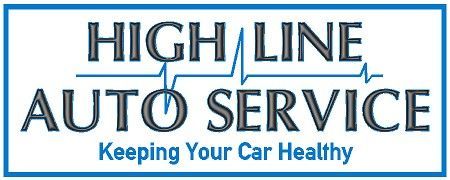ADAS CALIBRATIONS
What is an ADAS calibration?
ADAS stands for Advanced Driver Assistance Systems, which are technologies designed to improve safety and driving convenience by providing features like lane-keeping assistance, adaptive cruise control, automatic emergency braking, blind-spot monitoring, and parking assistance.
ADAS calibration ensures that the sensors, cameras, and radars used by these systems are properly aligned and functioning correctly. Calibration involves setting the sensors to meet the manufacturer's specifications. There are two types of ADAS calibration:
- Static Calibration: Performed in a controlled environment using special targets and equipment.
- Dynamic Calibration: Requires driving the vehicle under specific conditions so the sensors can self-align.
Both types of calibrations require specialized equipment. At High Line Auto Service we are able to perform either type of calibration.
How do I know if my car needs a calibration?
You might need an ADAS calibration if:
- Your Windshield Was Replaced: If your car has forward-facing cameras on the windshield, replacing the glass often requires recalibration.
- After an Accident or Impact: Even minor collisions can misalign sensors or cameras.
- Wheel Alignment or Suspension Work: Adjustments to the vehicle’s alignment or suspension can affect sensor orientation.
- Warning Lights or Messages: If your dashboard shows an ADAS-related warning or error, calibration might be needed.
- Error in System Functionality: Features like lane-keeping assist or adaptive cruise control not working correctly can indicate misalignment.
- Camera or Sensor Replacement: Anytime an ADAS sensor or camera is replaced, calibration is necessary.
Signs your ADAS may not be working properly
- Lane-keeping assist drifts out of alignment.
- Adaptive cruise control does not maintain proper distance.
- Automatic emergency braking triggers incorrectly or fails to engage.
- Blind-spot warnings appear at the wrong times or not at all.
What is required if I need to bring my vehicle in for a calibration?
- Fill fuel tank because the weight from the tank being full changes ride height.
- Remove all cargo, car seats, and personal belongings. This also changes ride height.
